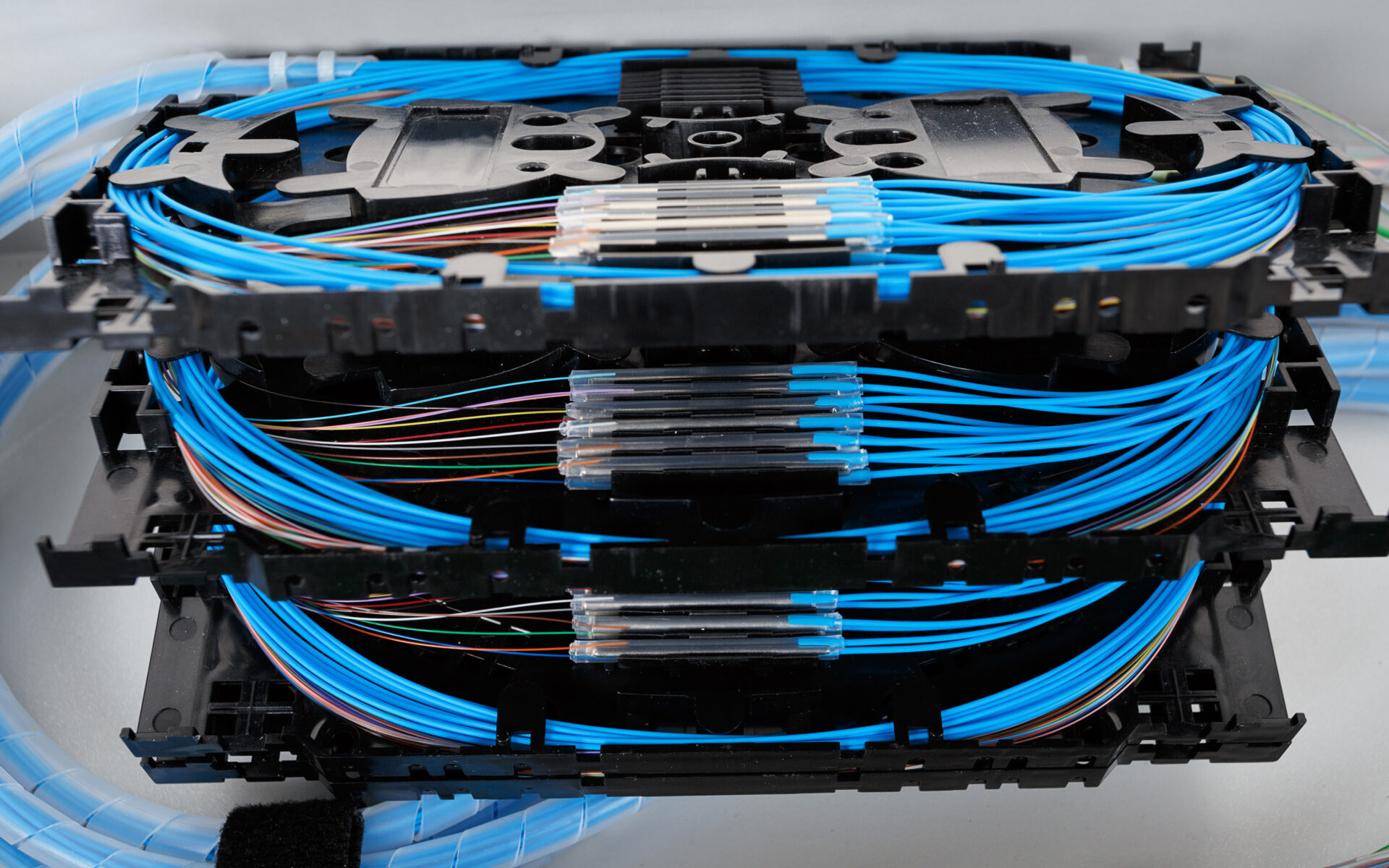Fiber Optic / Fusion Splicing
Fiber optic technology has transformed the ability for voice, video, and data to transmit at great speeds over the past two decades. The increased need for more bandwidth to support schools, data centers, gaming, remote offices, etc...has pushed the requirement for optical fiber to very high demand.
Speed! Fiber optics have a greater capacity for data transmission and the ability to transfer a minimum of 10 Gbps up to unlimited amounts. Fiber optics are considerably faster because the signal is not compromised by time or weather. As an example - if lightning were to strike a fiber cable, nothing would be distorted and communications are not interrupted. Fiber optics are made of glass or plastic, both materials being 'dielectric' or having no conductive properties which can be interfered with due to no electrical currents.

